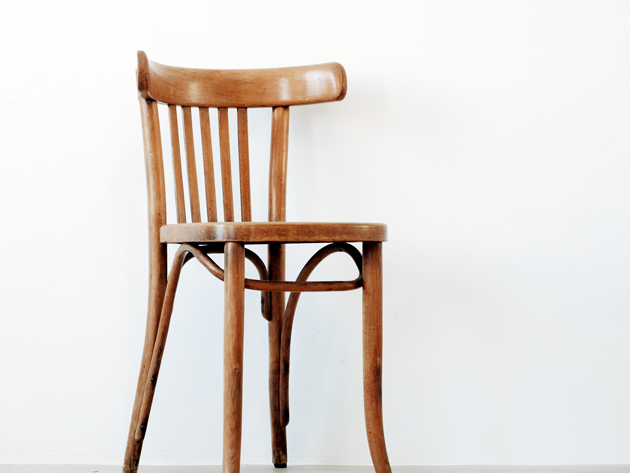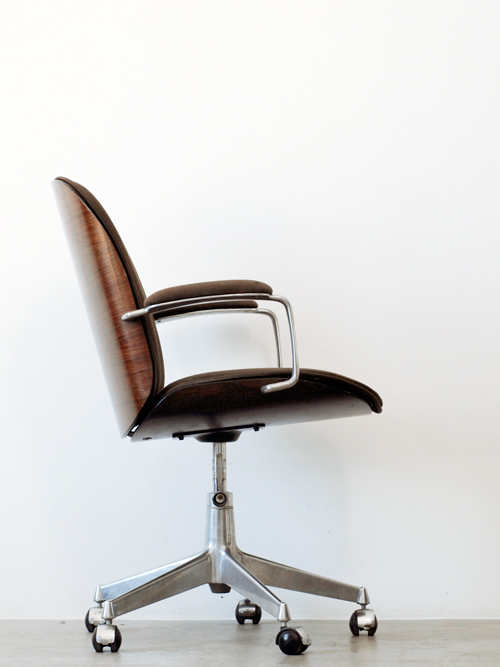.
The Editorial: Fix It Up
DIY has swept the world. Etsy has become a sprawling platform for thousands of micro creative endeavours. This weekend’s premier Maker Faire event in California’s Bay Area united thousands of do-it-yourself enthusiasts and set the blogosphere and Twitter on fire. And although the thrift shoppe/junk store has fallen out of favour as the prime shopping destination of the voracious hipster (as “hipster” is now merely another easily marketed-to ethnographic group), it is certainly fair to assume that we’ve made significant cultural inroads with this mass-revival of handicraft. But no matter how trendy DIY becomes, we remain a society of wasteful, wasteful children.

Let’s be honest: even the most staunch advocate of DIY lives in a world that is filled primarily with mass-produced objects. Furniture. Appliances. Electronics. Knicknacks. And certainly, we must! Most objects owe their existence in the first place, to the economies of scale and technical precision that is only possible through mass production. But, despite our best efforts, the “planned obsolescence” pioneered by the likes of designers Raymond Loewy and Brooks Stevens’ (and perfected in our generation by Steve Jobs and Jonathan Ives) will remain a major motor of the built economy for the foreseeable future. Simply, mass production isn’t the enemy – rather, it’s our reckless consumption of mass-produced things that is dangerous and unsustainable.

And, indeed, we throw some very nice things away. Our reflex to buy almost always seems to override any logical desire to repair. When something breaks – or starts to look less than perfect – we simply throw it away and replace it. That old espresso maker with a broken handle? Trash. The nice wooden table that would look stylish with a sand down and a new coat of varnish? Rubbish. The lamp that could use a new shade? Garbage. Instead of spending any time getting our hands a bit greasy (and brushing up our dexterity), we toss and re-buy.
While our society’s general propensity for buying cheap junk is part of the problem (throwing out objects designed to have short lives is inevitable), we tend to throw out nice things anytime they become démodé, too. Think of the countless classic rangefinders and Polaroids to be found for a few euros in any suburban junk shoppe that require only a thorough cleaning, a new battery and a roll of film. The beautifully-patterned old clothes waiting to be sewn into something new. The old books with lovely, lost typefaces.

Buying from “curated” vintage shops is concomitant recycling. But a real relationship with your objects – and a real, active contribution to sustainability – requires more than buying and consuming. And the deeper relationship you earn by maintaing older objects is therapeutic. You impose yourself upon them. They become personalised. And a mass object is transformed into a one-of-a-kind.
Our studio – a thoroughly modern, minimal place – is filled primarily with old, found and worked-over treasures: A recovered couch for guests, now painted pristine white. Several early 20th century Thonet chairs. Versatile height-adjustable found wooden stools and a sturdy old multipurpose table. A gorgeous MiM office chair from the line’s original 1960s Made in Italy range (MiM was back then a close relative of Fazioli grand pianos). An entire set of first-run 1974 Kartell 4875 chairs designed by Carlo Bartoli. Our most recent “acquisition,” is a circa 1995 drum scanner (complete with the requisite slightly yellow computer plastic of the era) whose superfluous quality kills that of expensive, much-newer flatbed scanners. Everything but the scanner was found – not searched for – after being thrown away by someone else.

Some of these objects could very well be museum pieces. But we use them, day in and day out because their inherent value is far from used up. And their inherent beauty, we feel, increases with age. Now, this isn’t an appeal for dumpster diving, nor is it a self-righteous lecture about recycling. But disposability is simply out of hand. This is broader than DIY: it’s foolish to think we can escape our manufactured world, so we must instead take steps towards truly engaging with it.
Tag Christof
